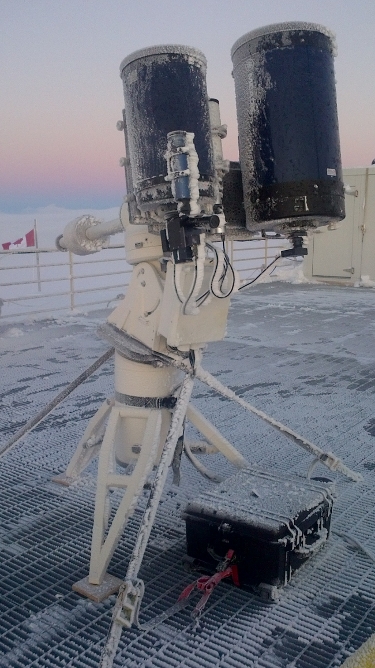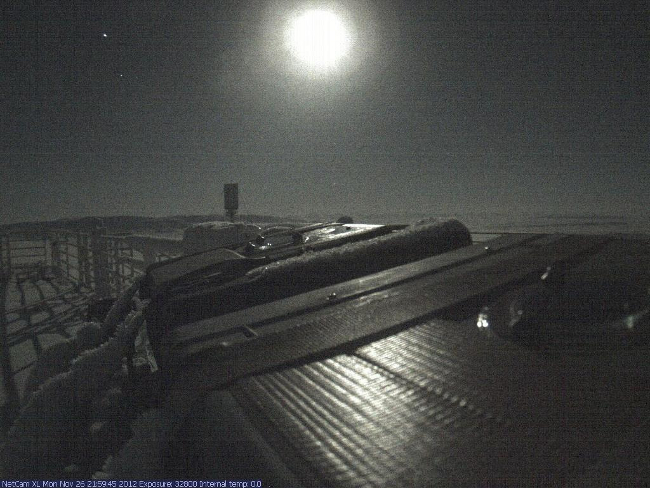
Arctic Update
For the 'backyard astronomer', a welcome aspect to observing from extremely high latitude is how intuitive it is to find things on the sky. At 80N, Polaris is always right overhead, essentially. Knowing where to look is reduced almost to the simplicity of knowing the current time. And everything circles at near-uniform airmass. There are challenges to astronomy from Eureka, but computing target rise and set times is not one of those.
The recent early-winter campaign was very successful. A total of 6 instruments were deployed on the PEARL rooftop platform over the course of a month. Three of these were seeing monitors constantly tracking Polaris. They are mounted in quick-release brackets on a robust commercial German-equatorial drive, shown in Figure 1. The Dunlap Institute 0.5 m telescope employs the same drive, as do warmbox electronics and communications systems. Redundancy and duplication increases the reliability of Arctic-hardened systems. Identical units are easily swapped, allowing repair inside the warmroom rather than out in the cold.

Keeping apertures clear of frost and ice-crystal accumulations is also important for taking good quality data with high efficiency. Three robotic instruments on the PEARL roof are currently taking data autonomously (see previous instalment of Arctic Update), employing heated windows. One of these is an infrared sky-brightness monitor. The other two are wide-field cameras designed for planet-transit detections and other time-domain astronomy (shown in Figure 2); first results are to appear soon in the Astronomical Journal [1]. More is to come in the literature, including more statistically robust estimates of seeing, promising more to see from the very northern edge of Canada's 'backyard.'

Eric Steinbring,